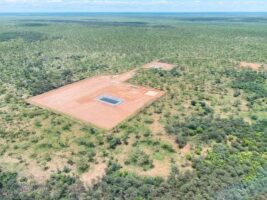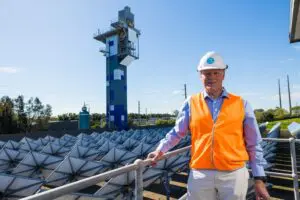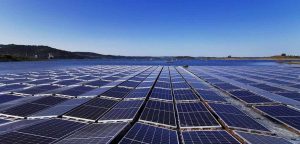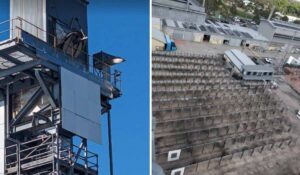Global warming could undermine the ability of soil carbon to act as a way to store emissions, with warmer temperatures compromising both the amount of carbon stored and the long-term permanence of that storage, according to a new research report from the CSIRO.
The CSIRO has prepared a new assessment of the risks posed by climate change to six different types of carbon abatement and storage, including agricultural soil carbon storage, the re-establishment of native forest cover, the planting of new forests and the protection of existing forests.
Research suggests that warmer temperatures could impact both the amount of carbon that can be stored in soils, as well as potentially jeopardising the ability of soil carbon to store carbon over the long term.
It’s important research because soil carbon has been identified by the Morrison government as one of its five “priority technologies” under the Technology Investment Roadmap launched last month, and claims the technology could absorb as much as 90 million tonnes of carbon emissions each year.
Under the technology roadmap, the Morrison government will aim to reduce the costs of monitoring the amount of carbon stored in Australia’s soils, and currently offers to purchase emissions reduction from soil carbon projects under the Emissions Reduction Fund.
Soil carbon involves the storage of carbon in organic material, usually captured by plants or by crops, that are stored within agricultural soils. It is generally a natural part of the lifecycle of plants and crops, and while storing carbon emissions can also contribute to improved soil health.
The highest risk factors identified by the CSIRO included the increased frequency of heat-stress limiting plant growth, reduced soil water availability and global warming that sees temperatures exceed what is optimal for plant growth.
Additionally, warmer temperatures could lead to changes that compromise soil respiration and soil microbial processes that facilitate soil carbon storage, as well as changes to the timing and seasonality of plant growth.
“The index suggests Management of agricultural soils and planting of new forests have the highest composite risk rating,” the CSIRO report says. “The index also shows the different methodology categories have different risk profiles with respect to accumulation risks and maintenance risks.”
“For the activities involving soil carbon sequestration the risks are evenly split, with all risk factors identified as having potential impacts on both accumulation and maintenance. This is because changes in soil carbon are driven by changes in the rates of organic matter input, as well as losses from soil respiration; and the impacts of climate change can simultaneously affect both pathways.”
So far, vegetation projects, soil carbon storage and savanna management project represent around three-quarters of the projects registered under the Australian government’s Emissions Reduction Fund, and around two-thirds of the abatement generated under the scheme.
The assessment completed by the CSIRO suggests that the amount of carbon that could be stored in soils, as well as the long-term permanence of soil carbon storage, could be jeopardised by the effects of global warming.
“Much research effort has been devoted to studying the response of soil carbon losses to increasing temperature, driven by a concern that anthropogenic warming could trigger the release of stored soil carbon globally, leading to a positive warming feedback with the atmosphere,” the CSIRO report says.
It is an ironic assessment that suggests one of the Morrison government’s priority technologies identified as key to reducing Australia’s emissions could ultimately be impacted by climate change.
Senior researcher from the Climate Council, Tim Baxter, said the report confirmed some of the major challenges of relying upon soil carbon as a way of reducing emissions, particularly as it did not address the primary sources of emissions, including the use of fossil fuels.
“One of the big problems with the Emissions Reduction Fund is that it is a climate change scheme that poorly manages climate change,” Baxter told RenewEconomy. “We’re already seeing unprecedented fire, heat and drought across much of the country, and this will over the coming decades based on our actions today.”
“Soil carbon could be a valuable tool to remove greenhouse gas emissions from the atmosphere, but won’t be if we ignore the bulk of the problem. The burning of coal, oil and gas is driving climate change, and soil carbon ultimately can’t fix this because it is extremely vulnerable in a climate changed future.”
“Soil carbon is probably the worst performing method in the ERF–a scheme that is already plagued by issues–in its failure to meet high expectations. Ironing out the kinks so that its potential can be realised is worthwhile, but fixing them shouldn’t come at the expense of integrity,” Baxter added.
The CSIRO report had been commissioned as part of a review of the Emissions Reduction Fund undertaken by the Climate Change Authority, which has released its recommendations.
“The Authority considers this work to be a vital step in understanding how the changing climate will affect our efforts to reduce emissions. It highlights risks are present and will continue to grow,” chair of the Climate Change Authority Dr Wendy Craik said. “The Authority recommends more work be undertaken to allow the Government and ERF participants to better understand and manage these risks.”
The Climate Change Authority has recommended that the federal government works to provide greater confidence for Emissions Reduction Fund participants around the future market for Australian Carbon Credit Units (ACCUs) issued to abatement projects under the scheme and to facilitate the participation of new project types.
The Clean Energy Regulator, which administers the Emissions Reduction Fund, was allocated $40.4 million in new funding over the next ten years under the federal budget, to develop a new exchange platform for ACCUs, as well as streamlining the development of new abatement methodologies.
“The ERF has now been operating for six years and is maturing as a scheme. While Government purchasing had been subdued in recent years, auction results in 2020 suggest efforts by the Government and the Clean Energy Regulator to boost activity are paying off,” Dr Craik said.










